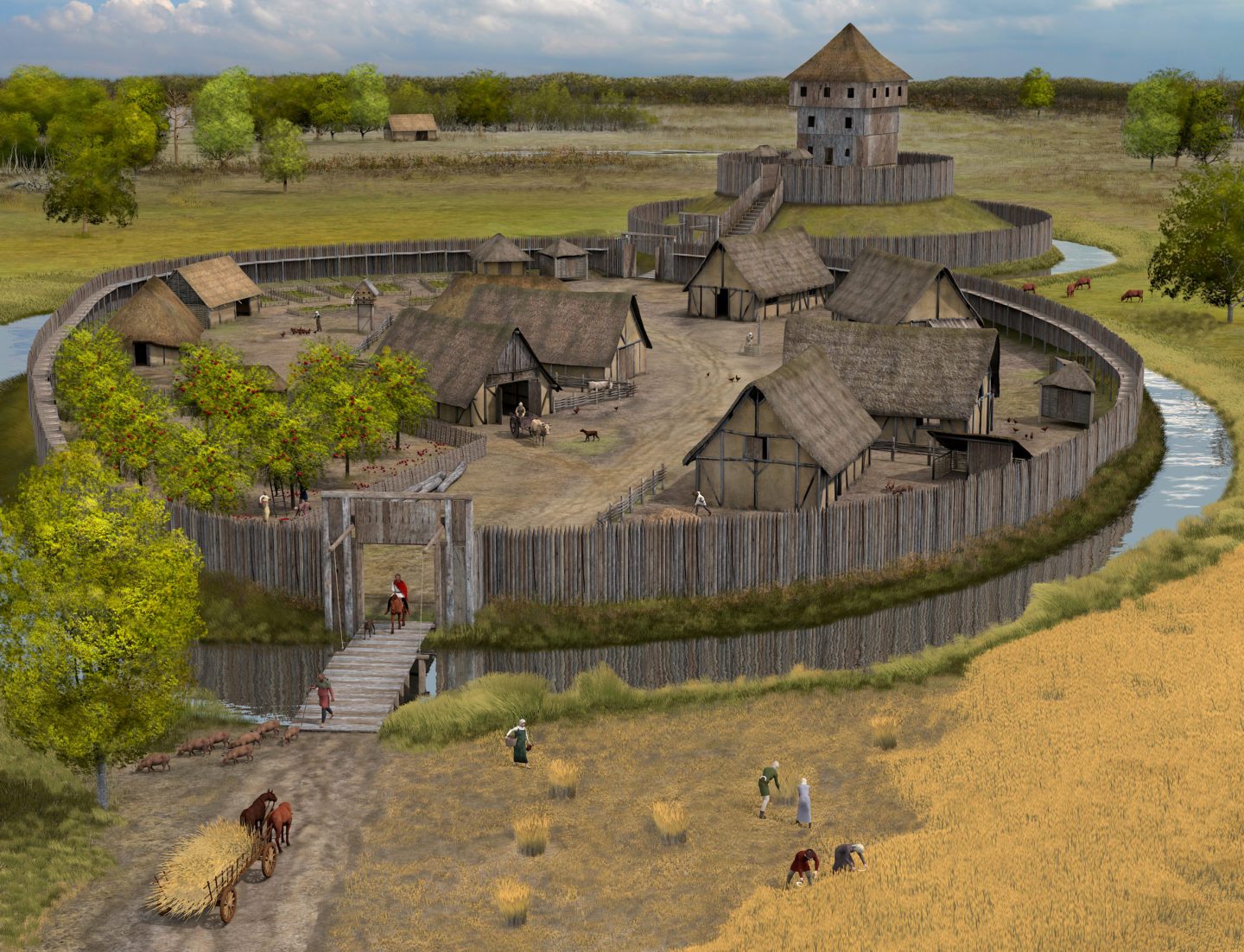Bailey
Baileys are fortified enclosures, often forming part of a fortification, designed to protect a hamlet or yard. These enclosures commonly include key structures such as a bakery, kitchen, chapel, storehouses, stables, barracks, forges and workshops. Originally, a bailey refers to a simple palisade wall, which may or may not be accompanied by a protective ditch. Over time, as the settlement expands, the wooden construction is often replaced with stone, increasing the fortification's resilience.
Contents
In many cases, early baileys were constructed alongside a defensive mound known as a "motte," which would later be developed into a citadel. As fortifications evolved, these early baileys and mottes were eventually transformed into full castles. Even in castles constructed as a unified whole, the term "bailey" continues to describe one or more enclosed yards linked to the main structure.
The addition of a moat, where feasible, often involved diverting a nearby stream or river using dams or ditches. The diverted water was held at the proper level by a secondary dam, after which it was released back into its natural course. This outflow from the moat was frequently utilized as a practical location for a gristmill or similar structures, blending defensive utility with functional infrastructure.
Bailey Hamlet
The bailey hamlet involves the construction of a stakewall, or palisade, encircling the community's key buildings. This form of fortification is common in hamlets with 2 hammers located within type-6 or type-5 hexes. Bailey palisades are constructed from sharpened tree trunks driven into the ground and bound together, creating walls that typically range from 10 to 13 feet in height. These fortifications can be quickly rebuilt with available materials when necessary, making them a practical defense during short-term conflicts. They are particularly effective against raiders and large vermin.
In type-6 baileys, a moat is not employed. Instead, defensive measures include a ditch reinforced with thorny brush and buried stakes, offering a simple but effective alternative to a water-filled barrier. Because of it's defenses, bailey hamlets are typically located in areas prone to conflict or where there is a need to protect against raiders, wild animals or monstrous threats. Inside the palisade, the layout is intentionally compact with buildings clustered together to maximise the effectiveness of the defensive perimeter and to allow defenders to patrol efficiently. These hamlets often serve as the foundation for larger settlements with their wooden palisades later replaced by stone walls as the community grows and resources become available. The bailey design prioritises practicality and security, providing a critical first step in establishing frontier settlements.
Motte
Mottes were primarily defensive features, serving as elevated platforms that provided a commanding view of the surrounding area, allowing defenders to spot threats well in advance. The height of the motte also gave archers and other ranged combatants a significant advantage, as they could fire down on attackers while remaining relatively protected. These structures were often crowned by a wooden or stone keep, which acted as a final point of defense.
With a type-5 infrastructure, a motte is incorporated into the bailey structure found in type-6 hexes. A simple motte is a flattened hill approximately 30 feet high and 120 feet in diameter. This construction is supported by a moat if sufficient water is available or a fortified ditch if not. Hamlets are often established in locations where a natural motte exists; however, if none is present, the motte must be constructed manually using wooden shovels, picks and hand-barrows. Building a motte from scratch requires an estimated 13,000 man-hours of labour.
The construction of a motte was typically accompanied by the development of a bailey at its base, forming the classic "motte-and-bailey" design. This combination offered a dual-layered defense: the bailey provided a protected space for living and essential functions, while the motte served as a fortified retreat in case of an attack breaching the outer defenses.
Mottes were sometimes reinforced with additional measures, such as timber palisades along their sides or stone retaining walls to prevent erosion and improve stability. Over time, as resources and technology advanced, some mottes were further developed into the foundations of more permanent stone castles, marking their evolution from temporary earthworks to enduring fortifications.
Village Bailey
This is a placeholder for further adjustment and elaboration.
See also,
